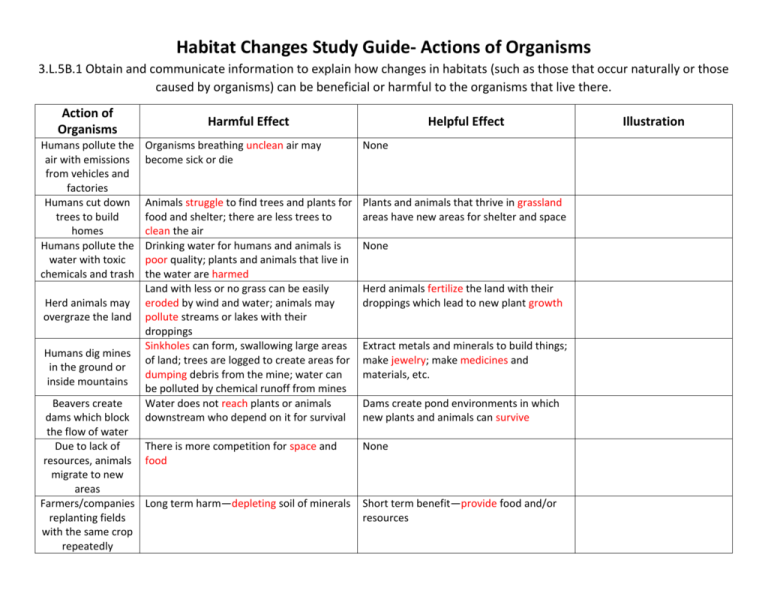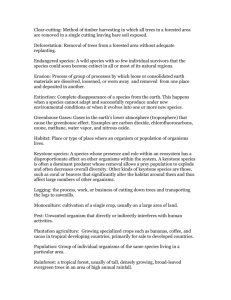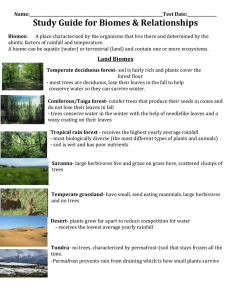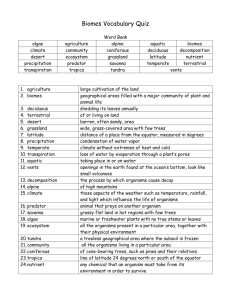Habitat Changes- Actions of Organisms Study Guide
advertisement

Habitat Changes Study Guide- Actions of Organisms 3.L.5B.1 Obtain and communicate information to explain how changes in habitats (such as those that occur naturally or those caused by organisms) can be beneficial or harmful to the organisms that live there. Action of Organisms Humans pollute the air with emissions from vehicles and factories Humans cut down trees to build homes Humans pollute the water with toxic chemicals and trash Herd animals may overgraze the land Humans dig mines in the ground or inside mountains Harmful Effect Helpful Effect Organisms breathing unclean air may become sick or die None Animals struggle to find trees and plants for food and shelter; there are less trees to clean the air Drinking water for humans and animals is poor quality; plants and animals that live in the water are harmed Land with less or no grass can be easily eroded by wind and water; animals may pollute streams or lakes with their droppings Sinkholes can form, swallowing large areas of land; trees are logged to create areas for dumping debris from the mine; water can be polluted by chemical runoff from mines Water does not reach plants or animals downstream who depend on it for survival Plants and animals that thrive in grassland areas have new areas for shelter and space Beavers create dams which block the flow of water Due to lack of There is more competition for space and resources, animals food migrate to new areas Farmers/companies Long term harm—depleting soil of minerals replanting fields with the same crop repeatedly None Herd animals fertilize the land with their droppings which lead to new plant growth Extract metals and minerals to build things; make jewelry; make medicines and materials, etc. Dams create pond environments in which new plants and animals can survive None Short term benefit—provide food and/or resources Illustration











